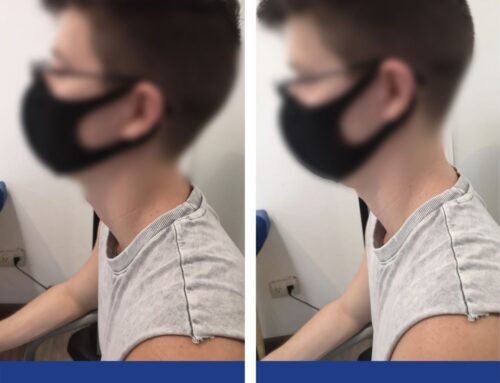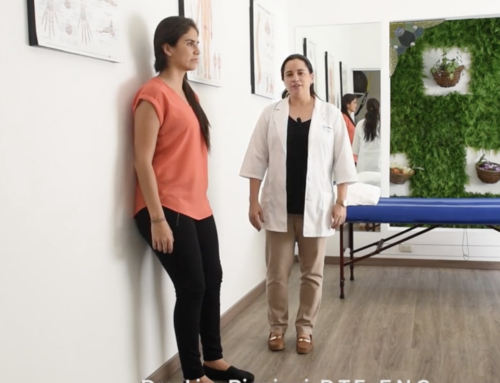Torticollis
 Definition
Torticollis is a form of dystonia (prolonged muscle contractions) in which the neck muscles, particularly the sternocleidomastoid muscle, contract involuntarily causing the head to turn.
Alternative Names
Wry neck; Loxia
Causes, incidence, and risk factors
Torticollis may occur without known cause (idiopathic), be genetic (inherited), or be acquired secondary to damage to the nervous system or muscles. It may develop in childhood or adulthood. Congenital torticollis (present at birth) may be caused by malpositioning of the head in the uterus, or by prenatal injury of the muscles or blood supply in the neck.
Symptoms
- Enlargement of the neck muscles (possibly present at birth)
- Asymmetry of an infant’s head from sleeping on the affected side
- Elevation of the shoulder on the affected side
- Stiffness of neck muscles
- Limited range of motion
- Headache
- Neck pain
- Head tremor
Various tests or procedures may be done to rule out possible causes of head and neck pain. A physical examination will show a visible shortening of the neck muscles and the head will tilt toward the affected side while the chin points to the opposite side.
Treatment
Treatment of congenital torticollis involves stretching the shortened neck muscle. Passive stretching and positioning are treatments used in infants and small children. Surgical sectioning of the neck muscle may be done in the preschool years, if other treatment methods fail.
Acquired torticollis is treated by identifying the underlying cause of the disorder. Application of heat, traction to the cervical spine, and massage may help relieve head and neck pain. Stretching exercises and neck braces may help with muscle spasms.
Drug treatments include anticholinergic drugs (baclofen). Injection of botulinum toxin is very effective to temporarily relieve the torticollis, but repeat injections every three months are usually required. Surgical treatments are rarely used.
Expectations (prognosis)
The condition may be easier to correct in infants and children. If the condition becomes chronic, numbness and tingling may develop as nerve roots become compressed in the neck. Botulinum toxin injections often provide substantial relief.
Complications
Some complications include neurological symptoms from compressed nerve roots.
Prevention
While there is no known prevention, early treatment may prevent a worsening of the condition.
To obtain full text:
http://healthguide.howstuffworks.com/torticollis-wry-neck-picture.htm
http://healthguide.howstuffworks.com/torticollis-wry-neck-picture.htm
 Definition
Torticollis is a form of dystonia (prolonged muscle contractions) in which the neck muscles, particularly the sternocleidomastoid muscle, contract involuntarily causing the head to turn.
Alternative Names
Wry neck; Loxia
Causes, incidence, and risk factors
Torticollis may occur without known cause (idiopathic), be genetic (inherited), or be acquired secondary to damage to the nervous system or muscles. It may develop in childhood or adulthood. Congenital torticollis (present at birth) may be caused by malpositioning of the head in the uterus, or by prenatal injury of the muscles or blood supply in the neck.
Symptoms
- Enlargement of the neck muscles (possibly present at birth)
- Asymmetry of an infant’s head from sleeping on the affected side
- Elevation of the shoulder on the affected side
- Stiffness of neck muscles
- Limited range of motion
- Headache
- Neck pain
- Head tremor
Various tests or procedures may be done to rule out possible causes of head and neck pain. A physical examination will show a visible shortening of the neck muscles and the head will tilt toward the affected side while the chin points to the opposite side.
Treatment
Treatment of congenital torticollis involves stretching the shortened neck muscle. Passive stretching and positioning are treatments used in infants and small children. Surgical sectioning of the neck muscle may be done in the preschool years, if other treatment methods fail.
Acquired torticollis is treated by identifying the underlying cause of the disorder. Application of heat, traction to the cervical spine, and massage may help relieve head and neck pain. Stretching exercises and neck braces may help with muscle spasms.
Drug treatments include anticholinergic drugs (baclofen). Injection of botulinum toxin is very effective to temporarily relieve the torticollis, but repeat injections every three months are usually required. Surgical treatments are rarely used.
Expectations (prognosis)
The condition may be easier to correct in infants and children. If the condition becomes chronic, numbness and tingling may develop as nerve roots become compressed in the neck. Botulinum toxin injections often provide substantial relief.
Complications
Some complications include neurological symptoms from compressed nerve roots.
Prevention
While there is no known prevention, early treatment may prevent a worsening of the condition.
To obtain full text:
http://healthguide.howstuffworks.com/torticollis-wry-neck-picture.htm
http://healthguide.howstuffworks.com/torticollis-wry-neck-picture.htm





